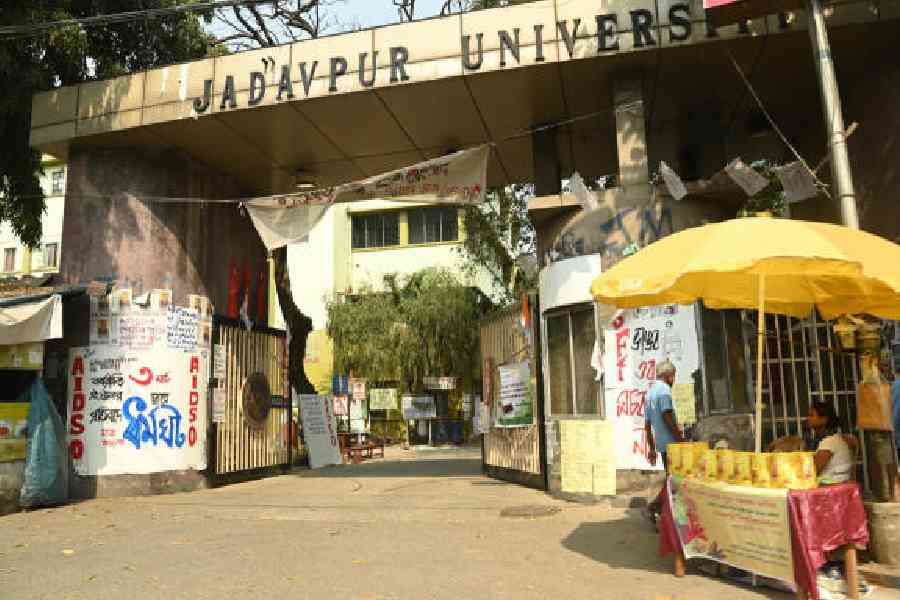“A protagonist and his story can only be as intellectually fascinating and emotionally compelling as the forces of antagonism make them,” writes famed screenwriting educator and author Robert Mckee.
The forces of antagonism come to protagonists in various shapes and forms. Sometimes they are internal; at other times they are external. Good villains set their heroes up for better challenges. The more the challenges, the more compelling it is. Which is what makes the Prime Video series Dahaad, directed by Reema Kagti and Ruchika Oberoi, so appealing.
Vijay Varma, who plays the primary antagonist Anand Swarnakar in Dahaad, is unnerving, cunning and almost reptile-like in his ways. You never know his next move even after being exposed to his patterns. Anand is a middle-class high school teacher with a stable pay, a happy family and a good reputation in society. Despite this, he’s a serial killer who goes against the same morals he teaches children in the classroom and under the trees across Rajasthan. He’s unsuspecting.
Anand has a smile on his face, always. He speaks softly and politely, and isn’t threatening at all. In many ways, Varma’s Anand breaks the villain mould, especially the one created by mainstream Bollywood of which Dahaad creators Zoya Akhtar and Reema Kagti are a part of. Anand isn’t really a grey character. He’s out-and-out evil in his actions. But even in the darkness of the character, Akhtar and Kagti were able to add shades in his personality which could be perceived as likeable in a different context. This is probably why Anand as a character is a success. He’s exceptionally well written, and well acted. Anand deserves a place in the ‘Men written by women’ meme. Women have managed to write much-layered villainous men than men themselves. Anand could be anybody — a man from your family or someone you just met.
Anand, who is partially based on the real-life killer called Cyanide Mohan, is quite different from the iconic villains of the time. Being a serial killer in a film / show mostly brackets a character as a psychopath. Their personalities become stereotyped based on previous portrayals of such characters. But every human is different. Every human with psychopathic traits are also very different from one another. It is only when writers work out of stereotypes and patterns do such characters really stand out. Which is why The Joker (Heath Ledger / Joaquin Phoenix), Javier Bardem’s Anton Chigurh (No Country for Old Men) and Anand Swarnakar, despite being cinematic psychopathic villains, have very different paths and patterns, and elevate their respective scripts to a great extent.
Sonakshi Sinha’s Anjali Bhaati is an antithesis of Vijay Varma’s Anand Swarnakar
Every hero has a weakness. The villain is great at attacking that weakness, knowingly or unknowingly. For The Joker in The Dark Knight, it was a conscious choice. He wanted Batman to break the one rule he never wanted to break. Batman’s biggest weakness was his own moral compass, his rigidity to break his rule despite all odds. The Joker pushes him to the edge, challenging him at every turn and making sure his mind breaks enough to finally kill. In Dahaad, the attack isn’t quite as motivated.
The protagonist — sub-inspector Anjali Bhaati, played by Sonakshi Sinha — is a young woman who’s just moving past her “marriageable age”. Her mother reminds her, quite unidimensionally, that she must settle down at the earliest. What will people say? They belong to a lower caste and finding a match that is at least ready to meet them and have a conversation sounds like a good deal at this point. To her mother, Bhaati’s life — despite her professional achievements — is incomplete without getting married.
At the same time, Bhaati is working on a case: a serial killer is on the loose and is killing women from lower castes after seducing them with propositions of marriage. He talks to these women for days, sometimes months and years, meets them, asks them to run away from their houses, spends a night with them and then gives them cyanide-laced pregnancy pills. Bhaati’s weakness — the pressure to get married — is directly related to the act and the intent behind these murders.
Anand, the killer, isn’t directly trying to attack Bhaati. But his actions remind Bhaati every day that she must not give in to the pressure of marriage and choose the first man who shows her the basic amount of respect and affection. Because Bhaati’s social insecurity is tied to Anand’s motive, the cat-and-mouse chase between the two becomes compelling. Because here it’s not just the police catching a killer, there’s more at stake. In a way, Sinha’s Bhaati is an antithesis of Varma’s Anand.
The Hitchcockian difference between suspense and surprise
Master of suspense Alfred Hitchcock famously said that “there is no terror in the bang, only in the anticipation of it”. He went to lengths to address the difference between suspense and surprise. A plot which is largely a whodunit, where the killer is exposed in the end, is a surprise. It’s a revelation. The script where the villain is known from the beginning but the ending rests on how they will resolve the conflict is suspense. And often, more terrifying.
Dahaad exposes the villain from the very beginning (even in its trailers). By the third episode, you are aware of his patterns and you know where he’s going to strike next. Anand and Bhaati cross paths many times. Bhaati’s suspicion grows even when she cannot confirm. The audience know what Bhaati the protagonist doesn’t. This increases the audience’s involvement in the narrative. They want the protagonist to learn sooner than later what they already know. This also creates a tension in the audience’s mind around the two characters — you do want the protagonist to catch the killer; at the same time, you want the killer to not get caught because it extends the thrill factor of watching the chase. It’s adrenaline.
This is perhaps why the primary antagonist of Season 2 of Delhi Crime was a let-down. Lata Solanki, played exceptionally well by Tillotama Shome, was revealed to be the primary antagonist in the season’s penultimate episode. Followed by the reveal, the show went deeper in Solanki’s life, her desires and her motivations. By then, a large section of the season was already over. From a viewer’s perspective, it’s no more a ticking clock but a piece of information that is intentionally been given at a later stage.
But there’s no reason to believe that Delhi Crime’s structure doesn’t always work. It did work in David Fincher’s Se7en. The only difference was the motivation behind the reveal of information. Kevin Spacey’s John Doe, who was famously not included in any of the promotional materials to surprise the audience, was revealed to be the killer only at the end of the second act. The reason why his reveal worked so well mid-film was because of the motivation for the reveal. John Doe walked up to the police station, surrendering himself, for he needed to be caught to prove his final point. Shome’s Solanki wasn’t revealed with any such motivation. It was a directorial choice to reveal the killer to be this character. An arbitrary choice. Dahaad doesn’t make this mistake.
Dahaad is two episodes too long
Despite doing everything almost flawlessly, the writing of the Anand character turns lazy towards the end. We’ll never know if this was partly because of streamers and their mandates of extending a show for the eight episodes ‘sweet spot’. Dahaad is two episodes too long. The last two episodes didn’t just not add anything to Anand’s character, it took away everything good that was given to him.
There was a lot of mystery around Anand’s past. He’s the elder brother in an upper caste family where the patriarch considers him the black sheep. The mother, as we previously learnt, had passed away in an accident after she fell down the stairs. And Anand is the only one who hasn’t gotten into the family jewellery business. When you learn that Anand targets lower caste women and persuades them to marry only to later kill them, you, as an audience, start theorising possible histories for the character. Why is he doing what he is doing? It’s an interesting rabbit hole. Often this gap of information makes the character compelling.
Anand was in the sweet spot for the longest time — not a Joker whose past is absolutely unknown, nor Black Panther’s Killmonger whose past and motivations are well drawn out. But in the last two episodes, the creators explain his character to the extent of overexplaining. We learn his mother was killed by his father and he had to lie to everyone about the nature of the death, including to his own brother. We know that is what has driven him out of the family and that his father, when pushed to the edge, is bound to listen to him to keep the secret alive. Ultimately, Anand’s arc falls flat. His final moves remain unmotivated and not impactful. Added to this is the rushed ending of the last episode itself.
Anand could have been iconic. Ultimately, the show makers couldn’t trust the audience to connect the dots that were all out there. And because of this mistrust, the character writing disappoints. Perhaps when streaming becomes less rigid about expectations regarding episodic arcs and formats, and creators are not in a rush to keep producing new work every other month, we’ll have a great villain for the ages again.











